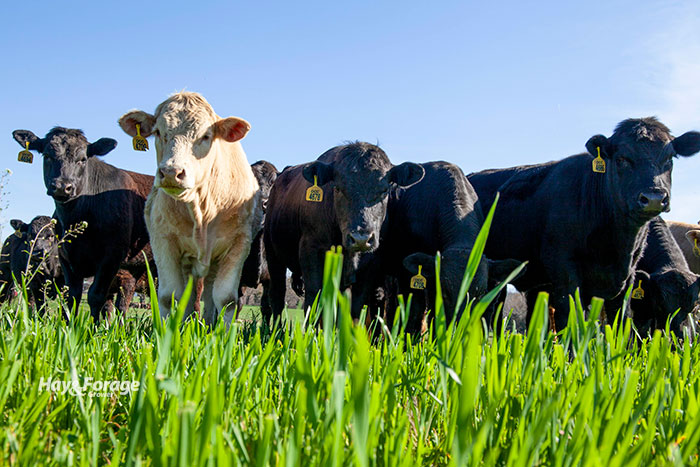Graze small grains the right way |
| By Mike Rankin, Managing Editor |
|
|
 For many cattle operations, grazing winter annual cereal grains is a standard practice. For every 1,000 pounds of forage dry matter production, there is the potential for about 100 pounds of beef gain, according to Todd Whitney, an extension educator with the University of Nebraska. “Whether growing small grains or cover crops, grazing will be maximized if livestock producers wait until the plants are 4 to 8 inches tall before starting the grazing process,” Whitney writes in a recent University of Nebraska Extension CropWatch newsletter. “Then, stock the fields with enough animals to maintain plant heights between 6 and 12 inches. Flash grazing or dividing fields into smaller paddocks may prevent overgrazing plants below the 6-inch target plant height,” he adds. If the endgame is to both graze and harvest the cereal for grain, cattle need to be pulled from fields before plants reach first hollow stem or jointing development. When plants are grazed later than first hollow stem, grain yields will suffer, declining by 1% to 5% for each day that grazing continues. “This is because the grazing animals may be consuming grain heads in the immature tillers,” Whitney notes. Timing of a particular growth stage varies each year and depends on factors such as fall planting date, variety, and spring soil conditions. First hollow stem occurs about a week prior to jointing when the immature head rises in the tiller above the soil surface. “The jointing stage can be identified by feeling with your fingers a bump or joint on the tiller stems as you move your fingers up the stem from the soil surface,” Whitney explains. “Generally, you will want to focus the growth stage assessment using the larger primary tillers.” Where grain production isn’t desired, growers can extend the grazing season for cereal forages into mid-June. One concern when grazing small grain pastures is animal death from grass tetany. Tetany is more common in older, lactating cows than in dry cows or young stock. Grass tetany risk can be reduced by feeding magnesium oxide supplements mixed with salt, molasses, or grain. Monitor consumption carefully and adjust the mixture so cattle consume about one-quarter pound of magnesium oxide per cow each week.
|
